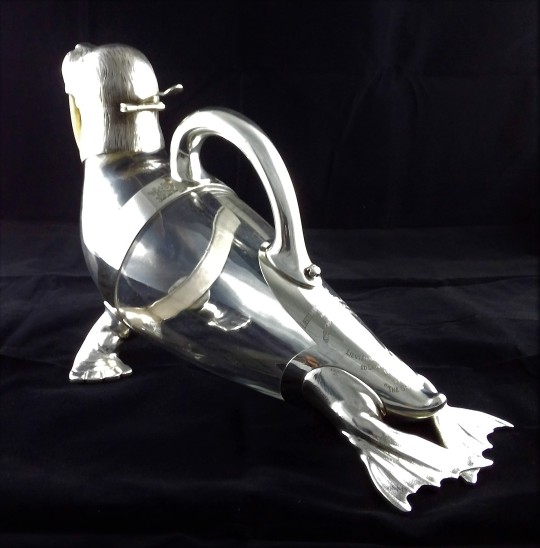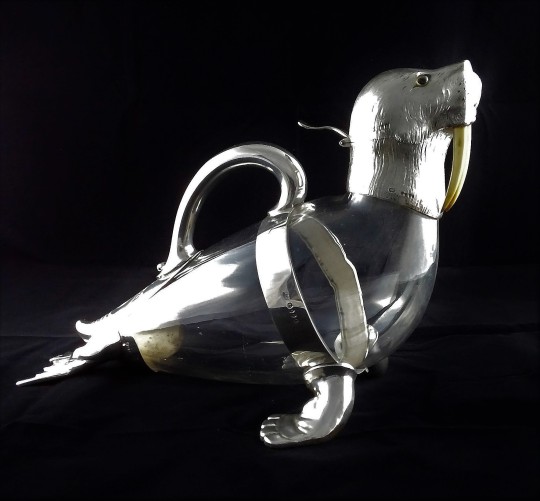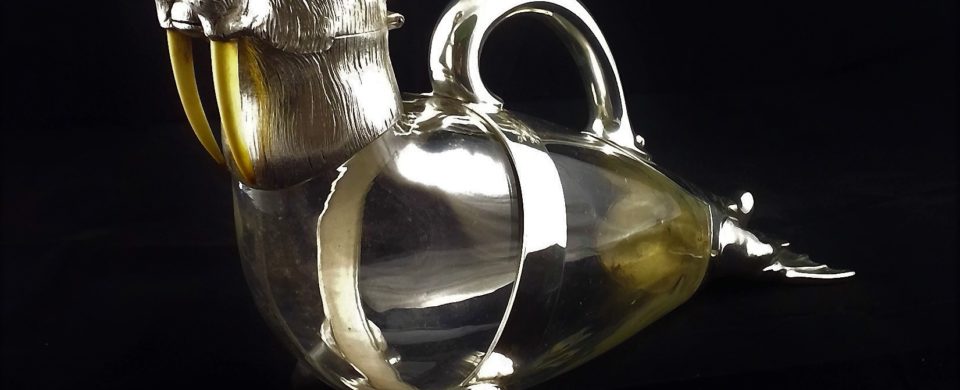Walrus shaped jug made of silver, Military life case, object no 18
4/RSF The Royal Scots Fusiliers
Last month we were curious about which objects like our visitors on our exhibition. We wanted to know, from all the objects. Which one they find most interesting, extraordinary and aesthetic. The one, that if given choice they would like us to tell them more about. So, we did. We chose four objects from display party on history of regiment up to Great War. And then we let choose one of them on our social media sites and in the museum.

So, without any further ado, the least popular object in that survey turned out to be Lt. Dalyell’s field cutlery, however interesting for us, did not caught eye of our readers. Next runners up with a tie are Pilkington Jackson figurines and Col. Fordyce’s pistol with long butt, although both interesting enough to gather dedicated support for themselves. And probably if running against other object, certain winners. They all did not reached not even closely the popularity of our Walrus jug from mess sliver collection, that without surprise to anyone proved to be the biggest attraction on the poll and joy to anyone that has a chance to see it up close.
As engraving on its tail states, it was a present to Lt. Col. The Earl of Galloway and Officers of the 4th battalion of Royal Scots Fusiliers. By Lieutenant J. W. Hamilton “on leaving the regiment” in July 1885. ‘In memory of “the good old times’ ”

The designer and maker of this jug was Alexander Crichtlon, the walrus was designed as silver mounted glass claret jug and it might have served soldiers as a decanter. Crichton has not been interested in just one animal, but in his works, he made similar vessels resembling crocodile, cockatoo, dodo, fish, squirrel, seals, ducks, budgerigars, owls and penguins. Amassing to 34 identified subjects, most of them made between 1881 and 1882, from which many were patented on his name or on shared patent with his business partners.

Although not popular during his career, at least not enough to achieve financial success, ending up declaring bankruptcy in December 1886 and moving to Sheffield, where he applied for discharge from bankruptcy in 1899. His work has clearly found popularity amongst higher society. Walrus similar to this one was part of one of the largest collections of his work, owned by descendants of dukes of Hamilton at Brodick castle and consequently become part of National Trust for Scotland collection. When this organisation started administrating it. And Her Majesty Queen Mother owned one resembling squirrel.

